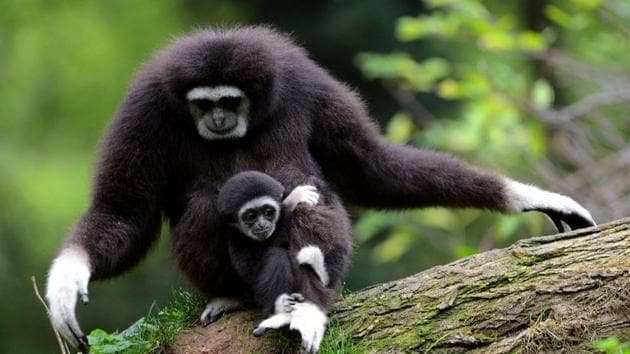First fossil evidence of nine-million-year-old Pliopithecoid ape found in India
Anthropologists have discovered two infant lower molar teeth that belong to an ape-like creature Krishnapithecus, from Haritalyangar, around 100km northwest of Himachal capital Shimla.
Anthropologists have found clinching evidence about the existence of a primitive ape—Pliopithecoids—for the first time from India. The creatures, scientists said, used to live in the forests of Shivalik Hills in present day Himachal Pradesh around nine million years ago.

Fossils of Pliopithecoids, about the size of today’s Siamang gibbons weighing around 12–15 kilos, had earlier been discovered from Europe, China and Thailand. The discovery will help in finding more about the ancestry of gibbons in India.
“But this is for the first time that their existence has been confirmed from India or in any south Asian country through fossil records. The fossils were discovered from Haritalyangar in Himachal Pradesh,” said Anek R Sankhyan a former scientist with the Anthropological Survey of India and now head of the Paleo Research Society.
Sankhyan discovered two infant lower molar teeth that belong to an ape-like creature Krishnapithecus, from Haritalyangar, around 100km northwest of Himachal capital Shimla.
The molars are around 8–9 mm in length. The crowns of both molars are fully formed, but there is no root formation suggesting that they belonged to infants.

“Krishnapithecus is a member of the Pliopithecoid family. Scientists knew very little about this creature. The discovery would shed light on the evolution of Krishnapithecus, its habits and the world it lived in,” Sankhyan said.
The findings have been published in Current Science journal in the April 25 issue and the Journal of Human Evolution.
In the 1970s, two researchers SRK Chopra and S Kaul had for the first time discovered a worn-out third upper molar of a Pliopithecoid-like creature from Haritalyangar.
It had led researchers to create an entirely new genus and species—Krishnapithecus. But as the tooth was worn out, it failed to provide much information. No discovery was made in the intervening four decades which could have shed some light on the creature.
“The evolutionary relationships of Krishnapithecus were unclear until the latest finds. The new finds have clarified its status. It has become clear that they are Pliopithecoids that lived throughout Europe and Asia from about 18 million year ago to 7 million years ago,” Terry Harrison, director of Centre for the Study of Human Origins in New York University, told HT over email. Harrison is a co-author of the paper published in the two journals.





